Meet the Thermal Space Team
Founding Members
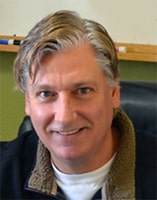 Stephen J. Nieczkoski: Co-founder and CEO/CTO
Stephen J. Nieczkoski: Co-founder and CEO/CTO
Mr. Steve Nieczkoski is Co-founder and CEO/CTO at Thermal Space Ltd. (TSL). Steve has a BS in Chemical Engineering from the Colorado School of Mines and 29-years experience in developing:
- High-performance stored cryogen systems
- Cryocoolers
- Thermal-management hardware and systems for:
- space-borne instruments and optical systems
- aeronautical systems
- defense platforms
- ground-based astronomy instruments
- superconducting applications
His experience spans all phases of engineering and hardware development, including:
- Specification development
- Hardware space qualification
- Requirements flowdown
- Conceptual and detailed design
- Analytical trade studies
- Prototyping
- Hardware integration
- Production, verification, quality and test
Mr. Nieczkoski began his engineering career as a Cryogenics Systems Analyst at Ball Aerospace, in 1988; where he developed his design and analysis capabilities along with extensive knowledge of cryogenic fluid and material properties. While at Ball, he was assigned to develop state-of-the-art cryogenic systems in support of NASA Space Exploration and Defense System programs. He was an integral part of the engineering team at Ball that were the first ever to incorporate the use of mechanical cryocoolers with a stored liquid-helium cryogen system for cooling a space-based x-ray imaging sensor and telescope (XRS).
A critical aspect of the hybrid XRS cryogenic system was limiting the mechanical loading on the delicate cryocooler cold tips, so as not to cause performance loss or premature failure. To accomplish this, the engineering team developed and verified a thermal-strap interface that was unprecedented with respect to thermal conductance and mechanical flexibility.[1] That thermal strap technology went on to become the standard for thermal interfacing in many spaceborne instrument systems over the next several decades.
Another highlight of Mr. Nieczkoski’s employment with Ball was his support of the Cryogenic Telescope Assembly (CTA) development. The CTA was the heart of NASA’s successful Fifth Great Observatory, originally named the Space Infrared Telescope Facility (SIRTF) and later renamed the Spitzer Space Telescope[2]. His multiple roles on the CTA program included:
- Detailed thermal analyses
- Key-component hardware development
- Instrument interface design and working with the science team to develop on-orbit observation strategies to minimize instrument transition periods and maximize cryogen lifetime[3].
Prior to founding Thermal Space, Mr. Nieczkoski was Chief Technologist at a Colorado-based technology development company, where he worked to advance cryogenic and thermal systems, and related technologies. He has been Principal Investigator on more than twenty SBIR programs that included Stirling-cycle, Joule-Thomson, and reverse-Brayton cycle cryocooler component and interface development, and other more diverse technology areas such as:
- SiGe power electronics for space
- High-field strength dielectric materials
- Electrostatically driven MEMS devices
- Acquisition and concentration of propellant resources from Lunar regolith
- Re-breather systems for long-range divers
- Phase-change material heat exchangers
- In-home oxygen concentration and liquefaction
- Energetic material fabrication techniques.
In addition to working with government agencies, large and small aerospace and defense companies, Mr. Nieczkoski has performed collaborative research and development with many renown academic institutions, and is well versed in technology transfer protocols. He has authored/co-authored more than a dozen technical publications related to his profession.
Mr. Nieczkoski lives in Boulder, CO, where he greatly enjoys the outdoor lifestyle through hiking, camping, fishing and skiing with his family. He also spends a good deal of his free time playing indoor and outdoor handball. Each of his three children attend Colorado universities, studying science and engineering.
[1] Design and Verification of Stirling Cooler Interfaces Suitable for Long-Lifetime, Spaceborne Sensor Systems, Cryocoolers 8, 1995.
[2] http://www.nasa.gov/mission_pages/spitzer/main/index.html
[3] Operating SIRTF for Maximum Lifetime, SPIE Proceedings, Vol. 4580, March 2003
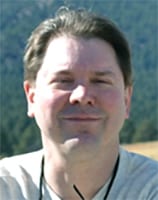 Edward Myers: Co-founder and CFO/CE
Edward Myers: Co-founder and CFO/CE
Mr. Ed Myers has over sixteen years of experience in developing high-performance thermal management technologies, for use in space-borne instrument systems. He has experience in all phases of system implementation, including:
- Writing specifications
- Requirements flow-down
- Hardware space qualification
- Quality control
- Conceptual design
- Analytical trade studies
- Tooling design
- Production
- Verification testing
He has excellent design and analysis capabilities, with extensive knowledge of fabrication techniques and system performance verification through test and analysis, with a comprehensive background in thermodynamics, heat transfer, and fluid dynamics. He has written many technical presentations, reports and proposals.
After getting a BS in Engineering Physics at the University of Colorado, Mr. Myers served a term in the US Navy as a Nuclear Engineering Officer on the USS Alexander Hamilton (SSBN-617). After working in environmental reclamation and testing, he realized mechanical engineering was his true calling. His hobbies use a lot of engineering, so it was a natural fit for him.
Mr. Myers received his MS in Mechanical Engineering from the University of Colorado and was hired as a Mechanical Designer and Fabrication Specialist at a small Colorado engineering firm, which at the time specialized in thermal engineering and research. He has been part of the development of thermal straps and other thermal-management hardware since 1998. Ed understands that no matter how simple hardware such as thermal straps may be, it’s the engineering to ensure the final product conforms to one’s specific requirements that provides success and customer value.
Throughout his engineering career, Mr. Myers has developed thermal analysis tools and testing protocols to ensure the thermal performance of components and assembled thermal subsystems is correctly verified, and relevant to the required operating environment and customer requirements. He also has many years of experience with aerospace quality-control systems and specification writing; having served in the role as Quality Manager in former employment and now at TSL.
Mr. Myers is responsible for creating and maintaining TSL’s AS9100C compliant Quality Management System. He has the experience to work with quality-specific government agencies, aerospace companies and academic institutions, knowing what questions to ask to get a realistic and provable specification written.
In his spare time, Mr. Myers likes to rebuild (and re-engineer!) classic Ford cars. Currently, his daily driver is a 1970 Ford Mustang convertible, and he’s intently working on his next set of wheels: a 1964 Galaxie 500 fastback. He also brews beer and is an avid student of everything astronomical and space exploration.
Fellow Members
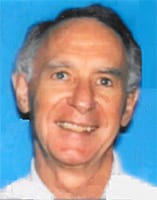 Dr. Jerome (Jerry) Siebert: BS, MA, PhD.
Dr. Jerome (Jerry) Siebert: BS, MA, PhD.
Dr. Jerome (Jerry) Siebert [BS, MA, PhD, University of California, Berkeley (1957-1968); Post-Doctoral Research, Cornell University (1968-1971)] has over 50 years of experience as a solid-state physicist. His specialties include materials science, cryogenically-cooled instrumentation and thin-film technology.
Dr. Siebert is currently running UniFilm Technology, a company he founded in 1984, which manufactures state-of-the-art physical vapor deposition systems in Boulder, CO. His professional history includes working as a thin-film physicist at Bacharach Instrument Company and then at Varian Associates in California, in the early 1970’s.
From 1977-1995 he worked at Ball Aerospace in Boulder, where he was responsible for managing and/or technically contributing to all R&D involving cryogenically-cooled instrumentation. He was also tasked with setting up a state-of-the-art integrated circuit-fabrication facility. Relevant thermal/cryogenic accomplishments while at Ball, include the design, development and optimization of:
- A superfluid helium control valve
- High-thermal conductance de-mate-able joints for cryogenic applications
- A high-conductance/low-stress “S-Link” thermal/mechanical interface to mechanical coolers
- The use of thin films to modify the thermal/mechanical surface properties of materials for cryogenic applications.
For these and other accomplishments, he was named Ball Aerospace “Engineer of the Year” in 1984. Earlier academic honors include:
- Phi Beta Kappa
- Tau Beta Pi.
Dr. Siebert has authored/co-authored more than ten technical publications. In 1995, he left Ball Aerospace to run UniFilm Technology full time.
Dr. Siebert currently resides in Boulder, CO., where he is often found either running or driving his mint-condition 1960 Triumph TR3. A former US Olympic Athlete; he was a Member of U.S. Olympic and National Track Teams in 1960, 1961, 1962 and 1964.
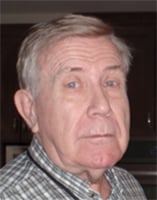 Dr. Jerry Cantril: PhD.
Dr. Jerry Cantril: PhD.
Dr. Jerry Cantril has over 40 years of experience in spacecraft flight operations, including:
- Launch operations
- Testing
- Analysis
- Remote sensing.
Before retiring, his position was instruments engineer on the SES Task 4001, supporting the NOAA/EMOSS team in-flight operations of the GOES 13, 14 and 15 spacecraft.
His previous position as Imager/Sounder Subsystems Lead supported the end-to-end testing, launch preparations and on-orbit verification of the GOES N-P spacecraft.
Prior to this effort, as a Task Manager, Dr. Cantril supervised the efforts of five full-time and three part-time senior engineers, in support of the development of operations plans and procedures for the EOS AQUA and AURA spacecrafts for the prelaunch testing, preparations for launch and the first 90 days of operations.
Dr. Cantril functioned as the lead payload flight engineer for the GOES I-M project for seven years, and was responsible for the design and generation of command procedures used for on-board instrument activity, maintenance of the instrument contingency operations procedures, and generation and execution of the post-launch payload operations checkout tests.
Dr. Cantril was associated with the Landsat 1-5 projects for 11 years in science-data quality assurance and data analysis. This included troubleshooting of the payload data ground processing system and interacting with the data-user community for data problems and special projects. He has experience in analysis of vibration and shock test data, and small boat operational environment test data and test system design for passive solar heating systems.
Most of his experience comes from working for various subcontractors of NASA and NOAA at the Goddard Spaceflight Center in Greenbelt, MD.
Since retiring, Dr. Cantril has practiced one of his great loves in life: cooking. He especially enjoys cooking dishes from Ireland.
Education
- A., Physics, Dartmouth College
- S., Physics, Oklahoma State University
- D. Physics, Oklahoma State University
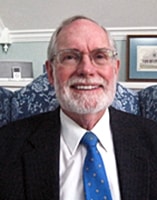 Richard Hopkins: BS, MS
Richard Hopkins: BS, MS
Mr. Richard Hopkins received his BS and MS degrees in Aeronautical/Astronautical Engineering from Ohio State University. He has more than four decades of experience in cryogenic and thermal engineering.
Having worked at General Dynamics three years and at Beech Aircraft for two, Mr. Hopkins spent the majority of his career at Ball Aerospace (1977-2004), where he was devoted to the design and development of high-performance, state-of-the-art thermal/cryogenic systems for space instruments. He developed the thermal analysis computer code and performed the thermal analysis in support of the design and build of the cryogenic system for NASA’s Infrared Astronomical Satellite (IRAS), which was a great success with the superfluid helium Dewar performing exactly as predicted and surpassing any previous achieved cryogenic space technology.
Mr. Hopkins was Systems Engineer for the Cosmic Background Explorer (COBE) superfluid helium Dewar, under contract to NASA Goddard Spaceflight Center. That cryogenic system, patterned after the IRAS Dewar, was developed on schedule, exceeded design criteria in flight and became a notorious success for infrared astronomy. The book In the Beginning: After COBE and Before the Big Bang was published based upon the success of the COBE mission.
Mr. Hopkins was Systems Engineer for NASA’s AXAF X-ray Spectrometer (XRS) that involved a very ambitious and visionary cryogenic system, using Stirling-cycle mechanical coolers to intercept parasitic heating and achieve a five-year on-orbit superfluid helium lifetime with very small Dewar. Critical to the performance of the XRS cryogenic system was the development of highly flexible thermal straps, fabricated from many high-purity aluminum ribbons to connect the cryocooler cold tips with the Dewar insulation system and provide high thermal conductance, vibration isolation and very small mechanical load to the cold tip.
Mr. Hopkins was Systems Engineer and Program Manager for the Cryogenic/Telescope Assembly (CTA) on NASA’s Fifth Great Observatory, The Space Infrared Telescope Facility (SIRTF, renamed Spitzer after launch). The CTA was revolutionary in that the telescope was launched warm and cooled to operating temperature on-orbit. The superfluid helium Dewar achieved in excess of the specified and predicted five-year lifetime, through the performance of a unique thermal control system that provided a Dewar vacuum shell temperature of 40 K in the heliocentric orbit.
Mr. Hopkins is recognized for his achievements within the aerospace and astrophysics community, and has authored/co-authored more than twenty technical publications on various aspects of cryogenic and thermal management systems. He currently resides in Boulder, CO and enjoys playing golf, cooking and traveling.
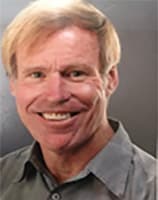 Greg Fickbohm: BSM, MBA, MSCIS
Greg Fickbohm: BSM, MBA, MSCIS
Greg Fickbohm (BSM, Arizona State University, MBA Colorado State University, MSCIS, Regis University) has over 40 years of project and contract management experience working on NASA, the Departments of Defense, Energy, and Agriculture, and commercial projects.
As an Air Force Officer he was on the project planning staff of the Drone/UAV System Program Office at Wright-Patterson AFB, Ohio. During a twenty-five year career at Ball Aerospace he was involved in the pursuit, negotiation and business management of very large satellite and scientific instrument projects. As an adjunct faculty member at Regis University he taught graduate and undergraduate courses in the School for Professional Studies. He also has technical project and financial management experience through affiliations with power supply, data storage/communications and cryogenics/thermal management companies. He currently consults with Rocky Mountain region businesses in the pursuit and management of US Government contracts.
Depending upon the season, he resides in either Louisville, CO or Sedona, AZ and spends his leisure time working on classic cars and enjoying various outdoor activities.

